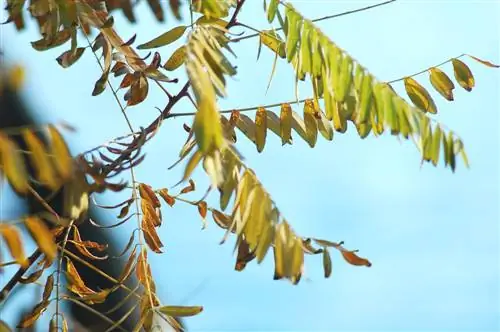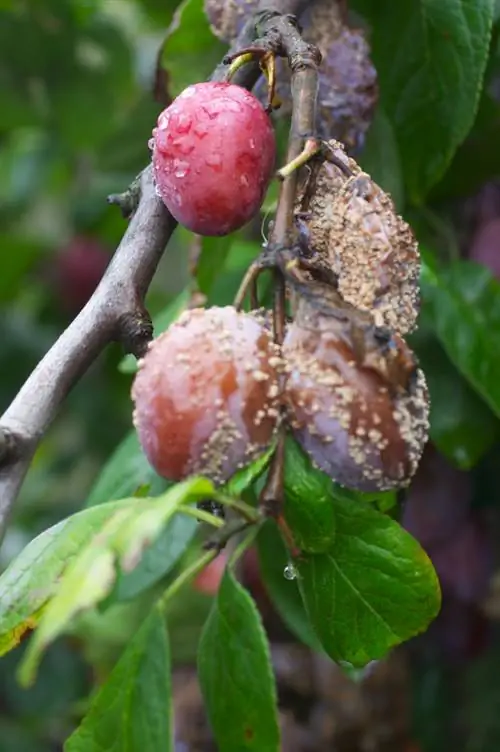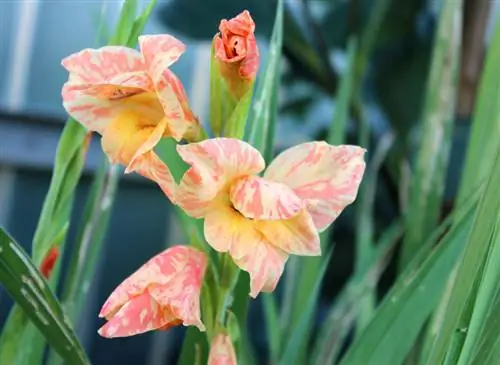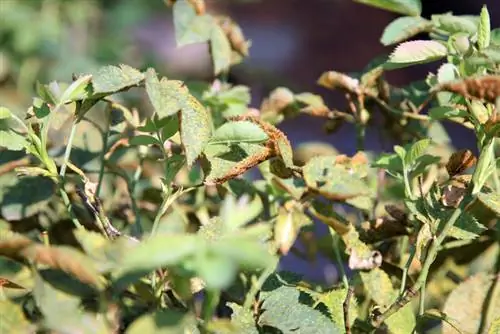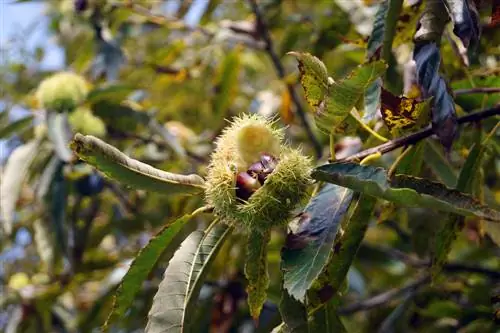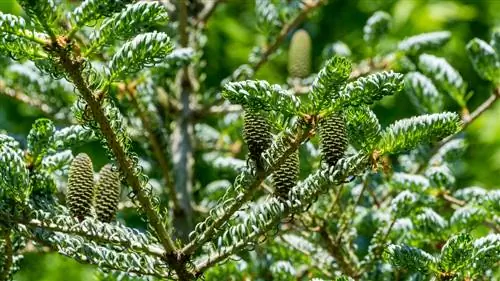- Author admin [email protected].
- Public 2023-12-16 16:46.
- Last modified 2025-01-23 11:21.
The robinia is actually a very robust deciduous tree - actually. Unfortunately, it also has some pests or diseases that it is not immune to. In this case, the tree needs your support because with the right knowledge you can quickly get rid of the parasites. Of course, the prerequisite is detection as early as possible. That's why we're introducing you to the three most common robinia diseases here.

Which diseases commonly occur in locust trees?
The most common diseases of black locust trees are black locust leaf miner, Phloespora leaf spot and aphids. The leaf miner creates meandering feeding tracks, the fungus Phloespora causes round spots and aphids suck plant sap.
Common diseases of black locust trees
The three most common diseases that specifically affect robinia include
- the black locust leaf miner
- Phloespora leaf spot disease
- Aphids
The black locust leaf miner
The pest, which was brought from America, unfortunately has no natural predators in this country. The butterfly lays its eggs on the leaves of the black locust. The hatched larvae then feed on the leaves. Accordingly, meandering traces of feeding can be seen on the leaves. Fortunately, the moth does not endanger the he alth of the black locust. An intervention is therefore not necessary. If the tracks still bother you visually, simply collect the caterpillars from the leaves.
Phloespora leaf spot disease
This is a fungus that spreads particularly often on robinias. Its appearance is particularly likely after rainy springs. Centimeter-large, round spots on the leaves or on the shoots of the petioles are characteristic. The shape of the leaves changes over the course of the year and their edges are often torn. Although this pest does not necessarily threaten the existence of your robinia tree, you should not stand idly by in the event of Phloespora leaf spot disease. Remove all affected branches with a vigorous pruning. Only if there is no improvement should you consider using chemical agents.
Aphids
Aphids are not only found on robinia, but they apparently particularly like the deciduous tree. If it is detected early, simply spraying it with a water hose helps. Curd soap dissolved in water achieves an even better effect (€9.00 on Amazon). Tinctures mixed with oil are also successful in the fight against parasites. The most natural treatment is to put predators such as wasps or flies on the black locust. However, the chances of success here are not 100 percent.

